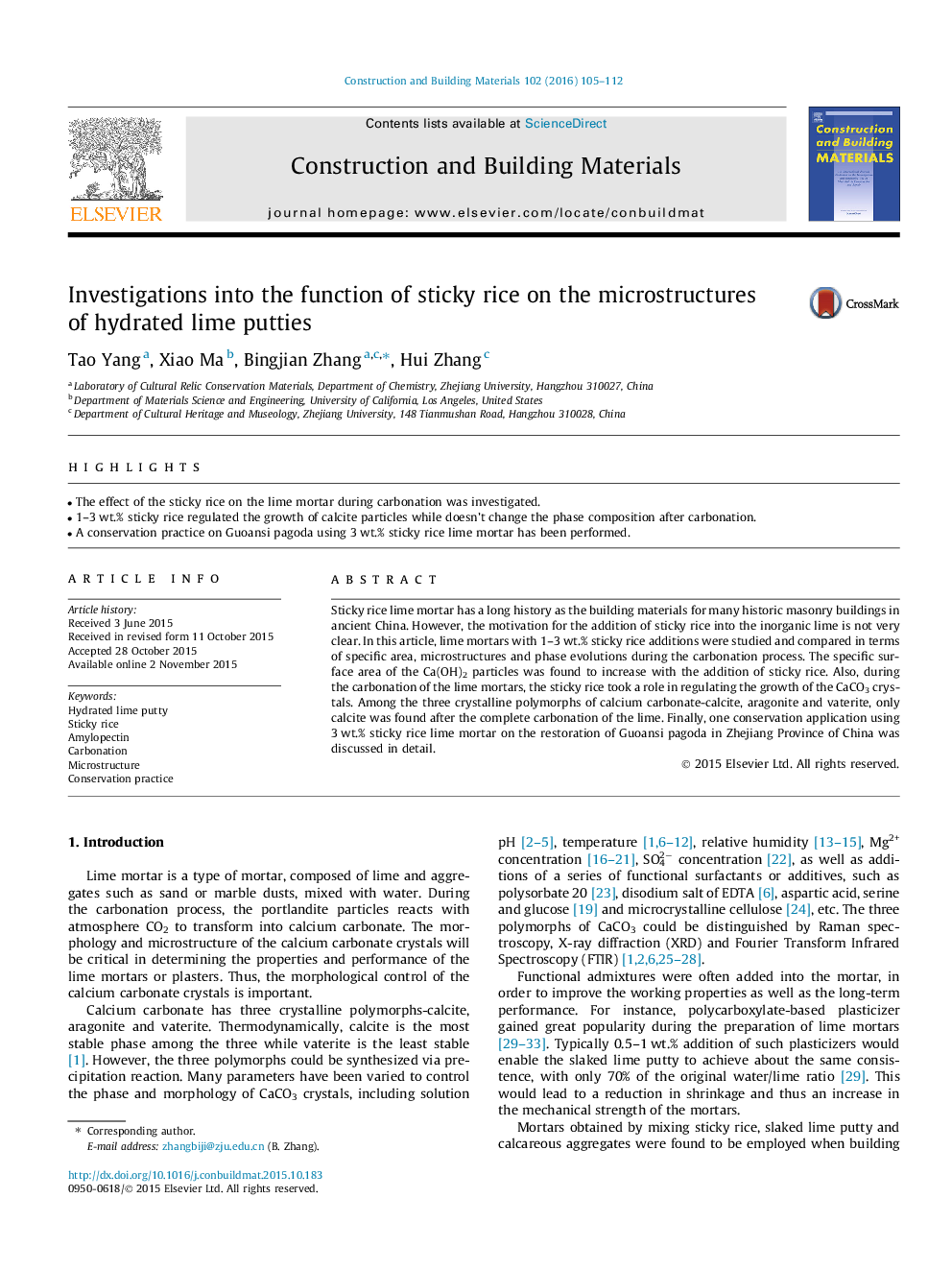| Article ID | Journal | Published Year | Pages | File Type |
|---|---|---|---|---|
| 10285001 | Construction and Building Materials | 2016 | 8 Pages |
Abstract
Sticky rice lime mortar has a long history as the building materials for many historic masonry buildings in ancient China. However, the motivation for the addition of sticky rice into the inorganic lime is not very clear. In this article, lime mortars with 1-3Â wt.% sticky rice additions were studied and compared in terms of specific area, microstructures and phase evolutions during the carbonation process. The specific surface area of the Ca(OH)2 particles was found to increase with the addition of sticky rice. Also, during the carbonation of the lime mortars, the sticky rice took a role in regulating the growth of the CaCO3 crystals. Among the three crystalline polymorphs of calcium carbonate-calcite, aragonite and vaterite, only calcite was found after the complete carbonation of the lime. Finally, one conservation application using 3Â wt.% sticky rice lime mortar on the restoration of Guoansi pagoda in Zhejiang Province of China was discussed in detail.
Related Topics
Physical Sciences and Engineering
Engineering
Civil and Structural Engineering
Authors
Tao Yang, Xiao Ma, Bingjian Zhang, Hui Zhang,
